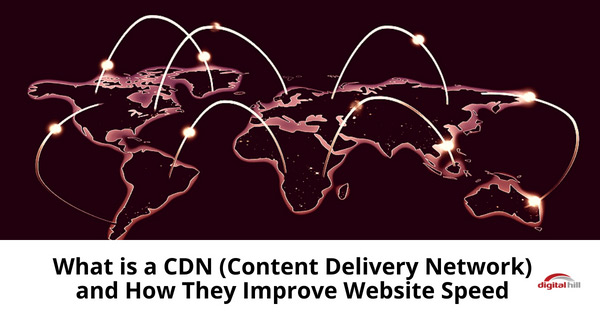What is a CDN (Content Delivery Network) and How They Improve Website Speed

Speed is the single most crucial factor in a website’s success. According to a 2017 study by HubSpot, 47% of internet users expect a webpage to load within 2 seconds. If a site takes longer, users will click away.
Any page on a site taking more than 3 seconds to load loses 11% of its page views. By every one second of delay, conversions go down by 7%. A business making $100,000 per year on their eCommerce store, could get up to $7,000 more in revenue just by increasing the website loading time by 1 second.
[click_to_tweet tweet=”Every webmaster should be working to improve their website’s speed on a regular basis. A Content Delivery Network (CDN) is one way to improve your website speed.” quote=”Every webmaster should be working to improve their website’s speed on a regular basis. A Content Delivery Network (CDN) is one way to improve your website speed.”]
What Is a CDN?
A Content Delivery Network (CDN), as the name suggests, is a network of computers across a geographical location that works together to deliver content. They allow a close by, quick transfer of content including HTML pages, images, style sheets, JavaScript files, and videos.
It’s quicker to get content in California from a server in California than to get the content from a server in New York. I know we’re only talking milliseconds here, but milliseconds count in computer time.
The use of CDNs has risen steadily with recent reports indicating 3.4% of global websites (or approximately 12.3 million sites) use the service. The adoption is even higher among top performing sites. Presently, almost half of the top 10,000 websites use a CDN.
How Does it Work?
CDN servers are known as edge servers, and the location of each edge server is known as a CDN Point of Presence (PoP). A single PoP can also have multiple edge servers.
If you choose to use a CDN, this is what happens when a user lands on your website:
- The user makes the first request to access a resource (lands on your homepage) such as a page or a form on your website.
- The edge server closest to the user’s location retrieves the requested resources from the primary server and delivers the resources to the user in the shortest time possible.
In addition to sending the requested resources (website) to the user, the edge server will cache those resources and save a copy of each resource. This way, when the user comes back and requests the same resources, they can be delivered from the edge server without going back to the primary server.
Copies of each resource are stored on the server so they can be accessed quickly by users closest to the server.
So, How Does This Improve Website Speed?
Website speed essentially refers to the time it takes for a web page to be fully loaded in a browser. A Content Delivery Network shortens this time in three ways:
1. The globally distributed nature of a CDN effectively reduces the distance between users and a website’s resources. Instead of having to connect to the content’s main server which could be located thousands of miles away, users can access the same resources from a local data center.
2. CDNs reduce the amount of data transferred by compressing files. Reduced file sizes mean faster load times.
3. Finally, for sites using SSL certificates, CDNs can optimize connections, further improving site load times.
The Benefits Don’t End There
Aside from boosting site load times, CDNs also reduce bandwidth costs, increase content availability, and improve site security. There is a cost for using a CDN. Website hosting costs with a CDN are more expensive than standard web hosting. Using the eCommerce example from earlier, though, it would make sense to use the CDN if it cost $2000 more per year but your net sales gain from site speed was $5000. CDN hosting is a growing consideration for businesses.
